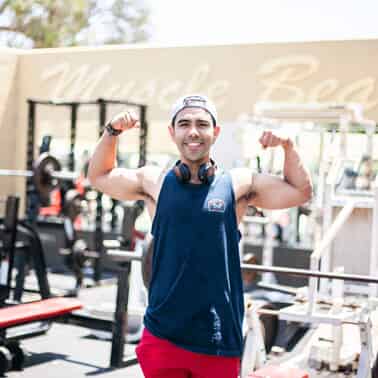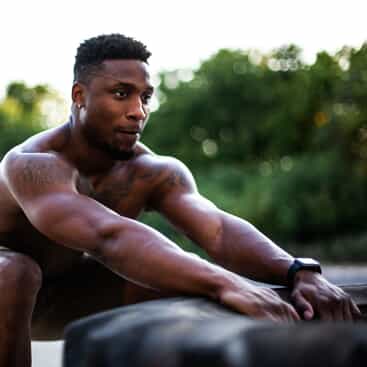You just finished a set of bicep curls and your muscles feel like they’re about to explode out of your arms. You look in the mirror and admire your suddenly huge biceps. Congrats — you’ve achieved the coveted muscle pump.
The science behind the pump
What you know as the “muscle pump” is actually called “transient hypertrophy.” Don’t let that super-sciency-sounding word scare you. Hypertrophy is the term for building muscle, and transient means it only lasts a short time — if you’ve ever gotten a muscle pump, you know just how fleeting it is.
Muscle pumps occur largely because of fluid buildup that accumulates in your muscles when you work out. When you lift weights, blood rushes to your working muscles, and lactic acid begins to build up and draw water into your muscle fibers. Together, these two triggers — increased blood flow and lactic acid buildup — cause individual muscle cells to swell, ultimately making your muscles look bigger while you’re working out.
If you’ve had a muscle pump before, you’re probably familiar with the feeling of fullness or heaviness you get in your muscles after an intense set. That’s all the fluid building up in your hard-working muscles.

Does a muscle pump help you build muscle?
Getting a muscle pump certainly makes you feel fitter, stronger, and bigger — but those results aren’t necessarily long-lasting. It’s called “transient” hypertrophy for a reason. Muscle pumps disappear about as fast as they come on, because once you finish working out, your body has no reason to hold onto all that blood in non-working muscles. As for the lactic acid, your body wants to flush that out as fast as possible.
Getting a muscle pump is a good sign you got in a good workout, but don’t count on your muscles looking pumped when you wake up the next morning. It is worth noting that getting a pump typically means you worked your muscles hard enough to induce adaptation (growth), although evidence is inconclusive.

How to get a muscle pump
The most efficient way to get a muscle pump is to lift weights, specifically at high volumes (more reps at moderate loads). The repeated contractions and extensions of your muscle fibers during weightlifting makes it easy for fluids to enter your muscle cells.
To maximize your muscle pump, try these tips:
- Do high-volume weightlifting instead of high-load weightlifting. More muscle contraction means more reason for your body to send blood to those muscles. Plus, science says high-volume weightlifting is the best way to build muscle overall.
- Hydrate before and during lifting weights. Getting a pump is all about fluids, and if you’re dehydrated, your body has less water to pump your muscles with.
- Eat carbs before you work out. Carbohydrates hold onto water in your body, which might contribute to a better pump.
- Utilize supersets and tri-sets. Like mentioned before, getting a pump is all about volume. Implementing supersets (two exercises back-to-back) and tri-sets (three exercises) is a simple way to increase your overall volume and decrease overall rest time, which should increase your chances of getting a muscle pump.
Want to learn more about getting a mad muscle pump? Talk to a World Gym personal trainer about individual training plans to maximize muscle growth.

